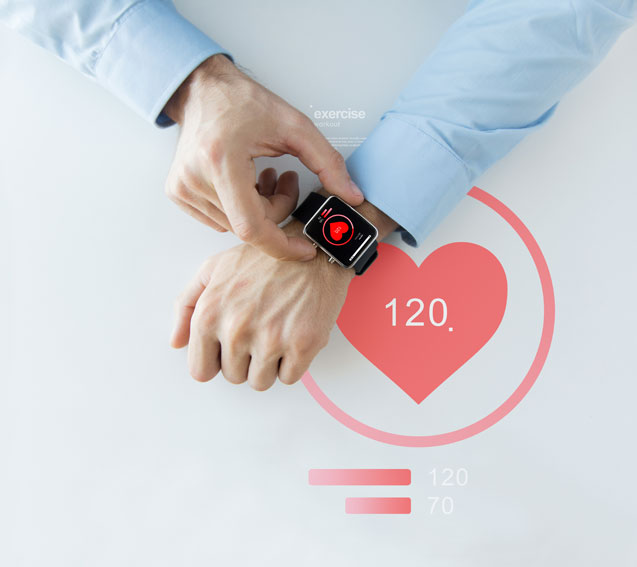For many of us, technology has taken over. We see the young and old alike staring at some sort of screen at home, at work, on the go, while waiting in lines, at the bus or subway stop, and on their commute.
We carry smartphones, and tablets, and laptop computers. Our homes have become “smart”. And the internet of things – where everyday objects like lamps and coffee makers have network connectivity – is no longer the stuff of science fiction.
You either love it, or hate it. But it’s not all bad.
There are advances in medical technology that have improved the lives of millions. High tech devices can assist in a wide variety of health conditions, and the wearable medical device industry is expected to see 8% annual revenue growth between now and 2019. For some, these devices help lower the cost of healthcare, and reduce or outright eliminate the need for costly visits or stays in hospitals.
These wearable devices may seem straight out of the movies, but they are very real, and saving or improving lives every day.
The ZollLifevest
Worn over the torso, the lifevest monitors the heartbeat, issues warnings when an irregular rhythm is detected, and can even administer an electric shock if the wearer goes into cardiac arrest. For people living with various heart conditions, it could very well be the difference between life and death.
HealthPatch MD
A simple, wireless monitor for heart rate, skin temperature, respiratory rate, and body posture. The patch attaches via adhesive to the chest, and even includes fall detection to help healthcare providers look after those with limited mobility.
Esight Eyewear
For anyone with low vision, it would be nice to have some way to adjust the quality of the what they are seeing. Esight delivers just that. Worn as you would a pair of sunglasses, the device captures a high definition, real-time feed of whatever the wearer is looking at, and projects it onto two LED screens. It allows the user to adjust contrast, zoom, and brightness to find the perfect balance for their particular vision issue.
WristOx2
A pulse oximeter that keeps tabs on both heart rate and blood oxygen levels, the WristOx2 is beneficial for those with asthma who are at risk of congestive heart failure and chronic obstructive pulmonary disease. It allows for remote monitoring of the patient’s vitals at home or in the hospital.
Sensus Pain Management System
Strapped around the leg just below the knee, the Sensus system allows the user to control pain management with the touch of a single button. For those suffering from chronic pain, a device such as this makes it possible to live a normal life. Once activated, it will start a 60 minute “therapy session”, with pain relief starting 15 minutes in.
InsuletOmnipod
Diabetes affects millions of Americans. Monitoring glucose levels and calculating insulin levels can be time-consuming, inconvenient, and error-prone procedure. The Omnipod attaches to anywhere on the body by way of durable and long-lasting adhesive, and can hold up to 200 units of insulin. Partnered with the Personal Diabetes Manager (PDM), wearers can instantly monitor and regulate their levels. The pod itself is waterproof, flexible, discreet, and suitable for both children and adults.
Code4Armour
This device, worn on the wrist like a watch, allows first responders to scan and access pertinent medical information about the wearer. When a user is unable to speak for themselves, it provides valuable details to paramedics, doctors, and other healthcare providers about medical conditions, allergies, or other data that they would otherwise not have.
Signia Hearing Aids
Hearing aids have existed for over a century, but technology is giving them an upgrade. The smart Signia aids work to reduce background noise while focussing in on a person’s speech. Working much like noise-canceling headphones, Signia amplifies the speech while reducing ambient sounds to deliver clear and natural sound. The aids allow users to adjust settings based on their own personal preferences, connects and syncs with a smartphone, and automatically makes minute and continuous adjustments based on the environment.
Microsoft Band and MyCareCentric
Similar to a Fitbit, the Microsoft Band is being used in the fight against epilepsy. Partnered with a program called MyCareCentric, the band collects data on sleep and body temperature changes, movement, heart rate, and skin conductance for epilepsy sufferers. This data can then be analyzed to further understand the condition, and even predict when a seizure is coming. The band can then notify family members and/or healthcare providers, even while the wearer is sleeping.
For individuals suffering from chronic pain, diabetes, and conditions like epilepsy or heart disease, wearable medical devices are improving the quality of their lives. Other devices can be used to monitor babies in pregnant women, assist couples trying to get pregnant, and a host of other scenarios.
Technology need not be sneered at, condemned, or looked down on. It’s all in how we use it.

